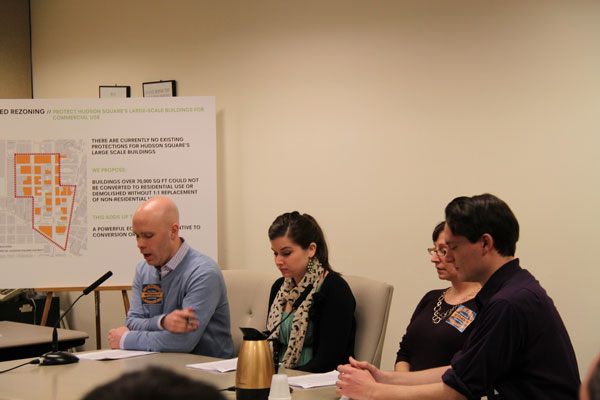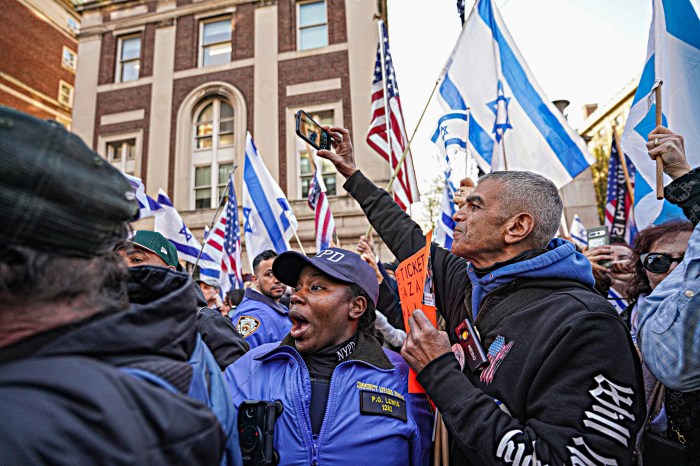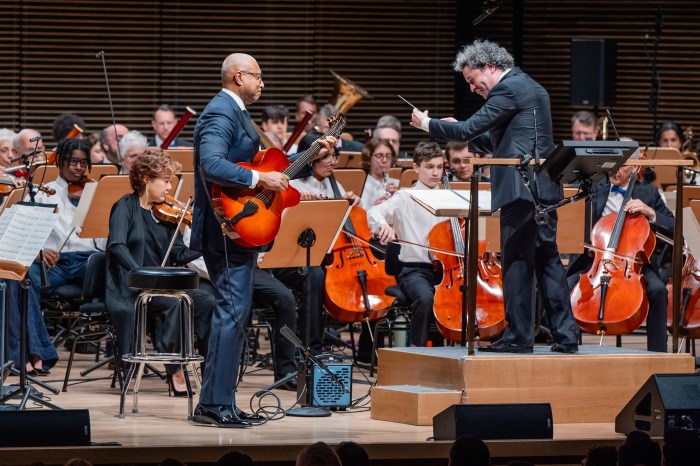
BY LINCOLN ANDERSON | The City Council’s Zoning and Franchises Subcommittee heard four hours of testimony by advocates and opponents of the Hudson Square residential rezoning proposal on Tuesday morning.
The hearing, attended by about 100 people, was held at 250 Broadway, across the street from the Council Chambers in City Hall.
Many who spoke called for a linkage between rezoning Hudson Square and landmarking the rest of the proposed South Village Historic District as put forward by the Greenwich Village Society for Historic Preservation. To date, the city has landmarked only about one-third of the proposed historic district.
Andrew Berman, director of G.V.S.H.P., said rezoning the adjacent Hudson Square area to allow residential use would surely ratchet up development pressure on the historic, low-rise South Village — so the landmarking of the rest of the proposed district must come before the rezoning. If the South Village isn’t landmarked, Berman and others said, then the rezoning should not go forward.
Berman later said he was disappointed that some of the subcommittee’s members didn’t appear to know exactly where the South Village, or even Hudson Square itself, were, or to fully grasp their geographical proximity.
The councilmembers’ questions were along the lines of “Is the South Village Hudson Square?” and “Is Hudson Square in the South Village?” as well as “What is the relationship between the two neighborhoods?”
At one point, asking for clarification, Leroy Comrie, chairperson of the Council’s full Land Use Committee, shrugged a bit and offered apologetically, “I’m a Queens guy.”
“We sent packets to all of them prior to this in order to educate them,” Berman said later. “I give credit to [subcommittee chairperson] Mark Weprin, who runs a good meeting, but too few of the councilmembers seemed to know the details of the proposal and its impact. They seemed more confused than anything. There didn’t seem to be anybody there to illuminate the other members of the committee about the parameters of the neighborhood.”
Had Council Speaker Christine Quinn — whose Third Council District includes Hudson Square and most of the South Village — been sitting on the panel, she could have enlightened her colleagues. But she didn’t attend the hearing.
A City Council spokesperson, in a subsequent interview, explained that Quinn doesn’t attend hearings by the Zoning and Franchises Subcommittee or Land Use Committee that pertain to her own district. In fact, she has gone to only one such hearing — on the Spring St. mega-garage project, several years ago. Quinn did have staff at Tuesday’s hearing on the Hudson Square rezoning, who report back to her on the proceedings, the spokesperson noted.
As for Quinn’s position on landmarking the South Village, the spokesperson said the speaker is on record supporting designating the entire proposed historic district — and will continue to advocate for this. However, landmarking is initiated by the Landmarks Preservation Commission, he added.
Meanwhile, David Gruber, chairperson of Community Board 2, testified that the rezoning — which is being pushed by Trinity Real Estate and is expected to add around 8,000 new residents to the district in the next 10 years — doesn’t adequately address the city’s requirement for public recreation space. C.B. 2 wants Trinity to include a rec center in the new tower the company plans at Duarte Square, at Sixth Ave. and Canal St. Trinity already plans to include space for a new, 444-seat public school in this tower’s base, and instead has agreed to contribute $5.6 million toward the nearby Tony Dapolito Recreation Center, which is actually just outside the rezoning area. Gruber also called for landmarking the South Village.
The rezoning would also cap building heights in Hudson Square, where none currently exist. In addition, Berman and Gruber called for lower heights on large streets than what was recently approved by the City Planning Commission for Hudson Square — 290 feet.
Trinity Church, one of the oldest parishes in the nation, owns 40 percent of the land in Hudson Square.
Testifying on behalf of the rezoning, Jason Pizer, president of Trinity Real Estate, said, “We take a long-term view — weighing how decisions taken today will impact the years and decades ahead.
“The goal of the rezoning is to strengthen and protect the area as a flourishing center for creative companies and jobs, while invigorating and preserving Hudson Square’s special character,” Pizer said. “Allowing limited residential development will add a missing ingredient essential to promoting street life and enriching retail opportunities. The introduction of height limits and disincentives to demolition will help preserve the area’s large buildings and neighborhood character. While Hudson Square is doing O.K. today, these changes are vital for the area’s continued value as a dynamic, 24/7, mixed-use neighborhood.”
This was the final public hearing on the rezoning. The Zoning and Franchises Subcommittee will next vote, followed by the Land Use Commmittee and then the full City Council, probably in mid-March sometime.
Asked later on Tuesday if there’s anything to report on the Landmarks Preservation Commission possibly designating the rest of the South Village anytime soon, spokesperson Lisi de Bourbon said, “No, other than it remains under consideration.”
When L.P.C. approved one-third of the South Village proposed district, it called it an expansion of the existing Greenwich Village Historic District.
“The commission in 2010 expanded the Greenwich Village Historic District — which is the largest historic district in New York City — by 235 buildings,” de Bourbon noted. “The original district, approved in 1969, had 2,035 buildings and had already been extended by an additional 45 buildings in 2006. The total number of buildings in multiple historic districts in Greenwich Village is now 2,315.
“We continue to work with elected officials, community leaders and advocacy groups to protect as many of the city’s historic neighborhoods as possible, not only in Greenwich Village, but also in many neighborhoods across all five boroughs where residents have longstanding requests for historic districts,” de Bourbon said, “so we’re considering the South Village Historic District proposal within the context of our other priorities.”
However, Berman argued that Landmarks, over the past 10 years, has actually paid less attention to Greenwich Village than other areas of the city in terms of the number of buildings it has designated over that period of time.

















